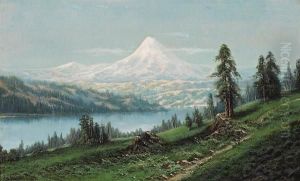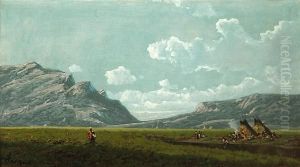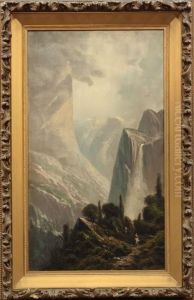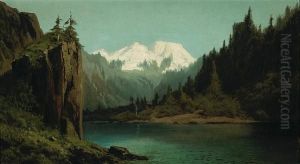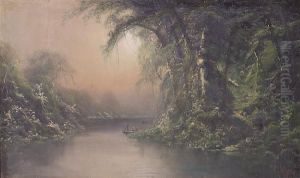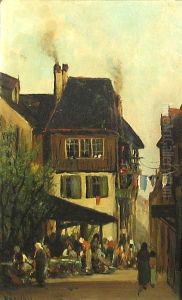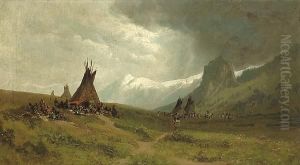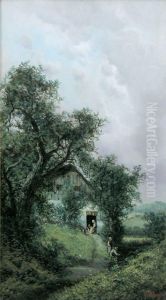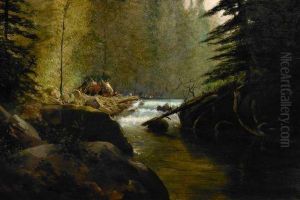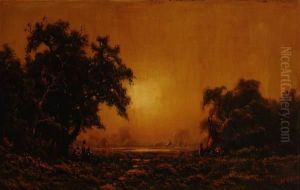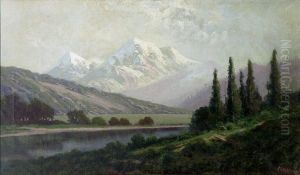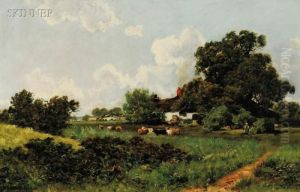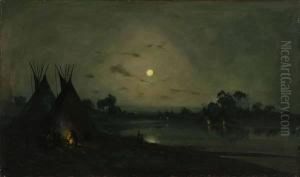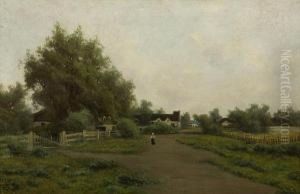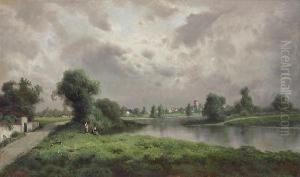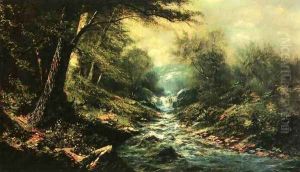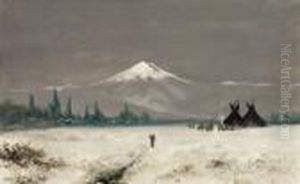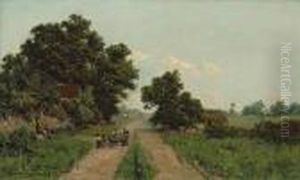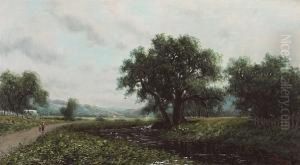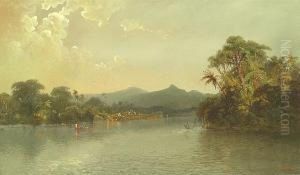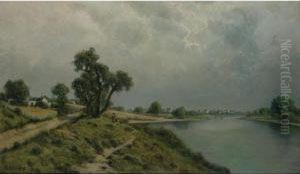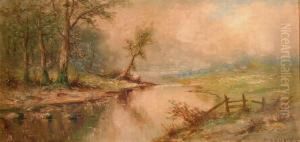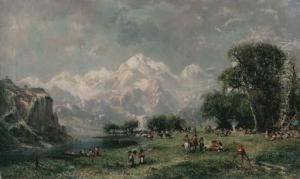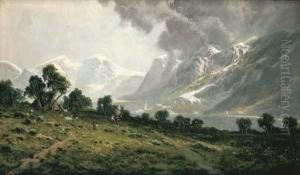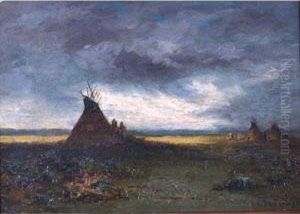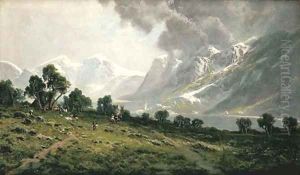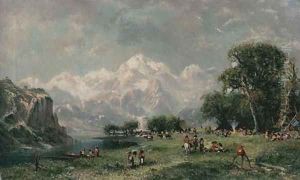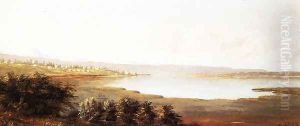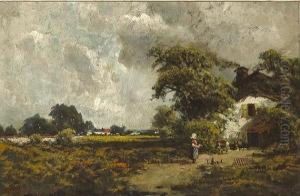Ramsome Gillet Holdredge Paintings
Ramsome Gillet Holdredge was an American painter known primarily for his California landscapes. Born on May 22, 1836, in Cattaraugus County, New York, Holdredge began his career as a portrait painter but is more famously remembered for his scenic depictions of the Western United States, particularly California, where he moved in 1850 during the Gold Rush.
After arriving in California, Holdredge initially tried his hand at mining but eventually shifted to painting, which turned out to be his true calling. By the 1870s, he had established himself as a prominent artist in San Francisco. He was heavily influenced by the Hudson River School, a mid-19th century American art movement embodied by a group of landscape painters who emphasized natural realism and often imbued their works with a sense of romanticism.
Holdredge's paintings are characterized by their detailed and dramatic portrayal of nature. He captured a variety of subjects, ranging from the majestic Sierra Nevada mountains to the serene landscapes of the Marin and Sonoma counties. His works often showcased the grandeur of the American West with a focus on the effects of light and atmosphere.
In his lifetime, Holdredge enjoyed moderate success and was a respected figure in the San Francisco art scene. He was a member of the San Francisco Art Association and exhibited his works at the association's exhibitions as well as at the Mechanics' Institute Fairs in San Francisco.
Despite his talent, Holdredge faced financial difficulties throughout his life, which were further exacerbated by his struggle with alcoholism. This struggle impacted his productivity and the consistency of his work. Nevertheless, he left behind a significant body of work that continues to be appreciated for its contribution to the visual record of California's landscape in the 19th century.
Ramsome Gillet Holdredge passed away on February 12, 1899, in San Francisco, California. Today, his paintings are part of various collections, including those of the Oakland Museum of California and the California Historical Society. Holdredge's work remains an important part of the artistic heritage of the American West and is studied for its historical and aesthetic value.
